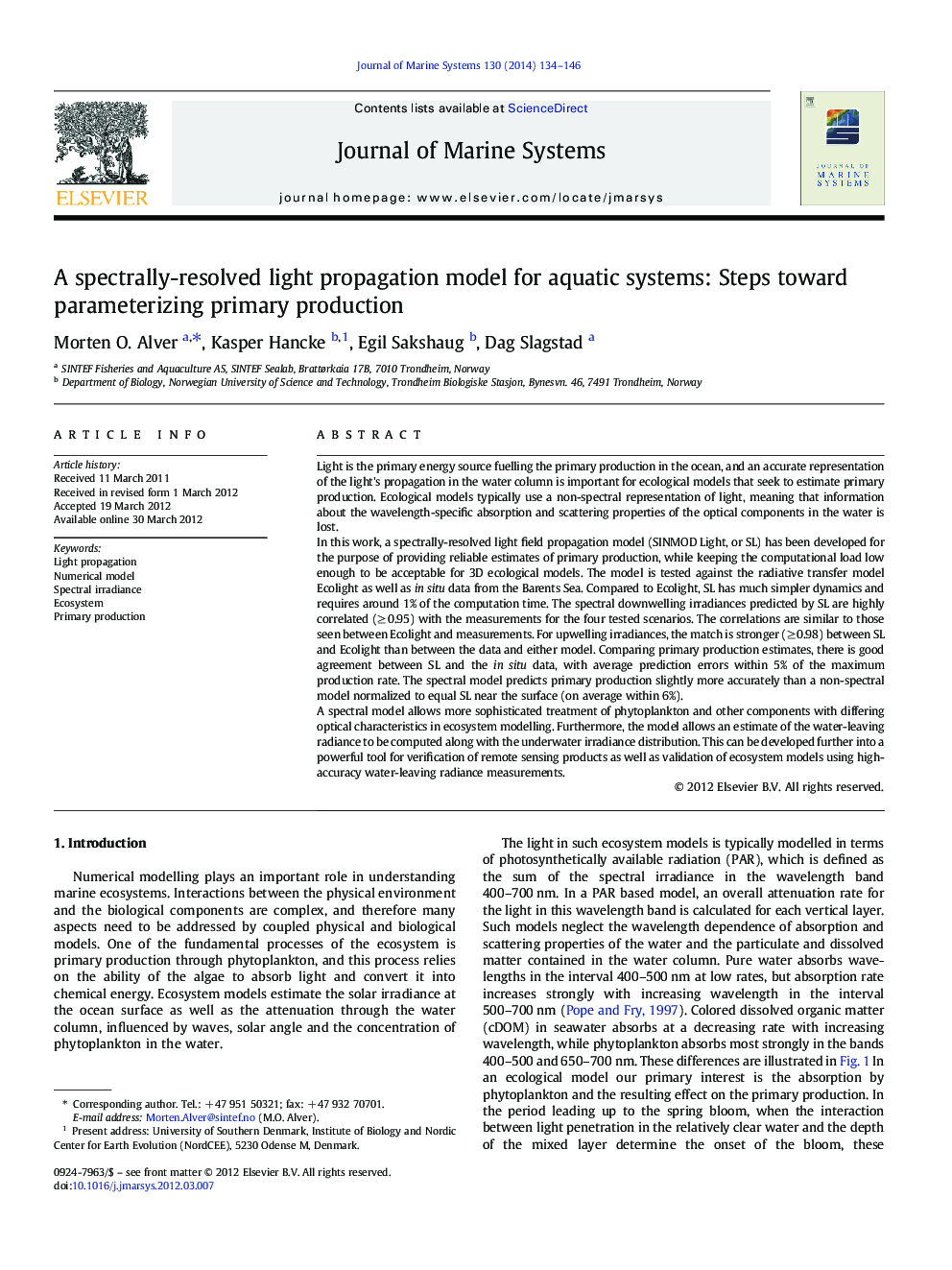| کد مقاله | کد نشریه | سال انتشار | مقاله انگلیسی | نسخه تمام متن |
|---|---|---|---|---|
| 6387059 | 1627299 | 2014 | 13 صفحه PDF | دانلود رایگان |
Light is the primary energy source fuelling the primary production in the ocean, and an accurate representation of the light's propagation in the water column is important for ecological models that seek to estimate primary production. Ecological models typically use a non-spectral representation of light, meaning that information about the wavelength-specific absorption and scattering properties of the optical components in the water is lost.In this work, a spectrally-resolved light field propagation model (SINMOD Light, or SL) has been developed for the purpose of providing reliable estimates of primary production, while keeping the computational load low enough to be acceptable for 3D ecological models. The model is tested against the radiative transfer model Ecolight as well as in situ data from the Barents Sea. Compared to Ecolight, SL has much simpler dynamics and requires around 1% of the computation time. The spectral downwelling irradiances predicted by SL are highly correlated (â¥Â 0.95) with the measurements for the four tested scenarios. The correlations are similar to those seen between Ecolight and measurements. For upwelling irradiances, the match is stronger (â¥Â 0.98) between SL and Ecolight than between the data and either model. Comparing primary production estimates, there is good agreement between SL and the in situ data, with average prediction errors within 5% of the maximum production rate. The spectral model predicts primary production slightly more accurately than a non-spectral model normalized to equal SL near the surface (on average within 6%).A spectral model allows more sophisticated treatment of phytoplankton and other components with differing optical characteristics in ecosystem modelling. Furthermore, the model allows an estimate of the water-leaving radiance to be computed along with the underwater irradiance distribution. This can be developed further into a powerful tool for verification of remote sensing products as well as validation of ecosystem models using high-accuracy water-leaving radiance measurements.
⺠A spectral model of light propagation in the water column is developed. ⺠Focus is on low computational requirements for use in 3D ecosystem models. ⺠Water column optical properties and primary prodution are computed. ⺠Good agreement is seen compared with in situ data and an established model.
Journal: Journal of Marine Systems - Volume 130, February 2014, Pages 134-146
